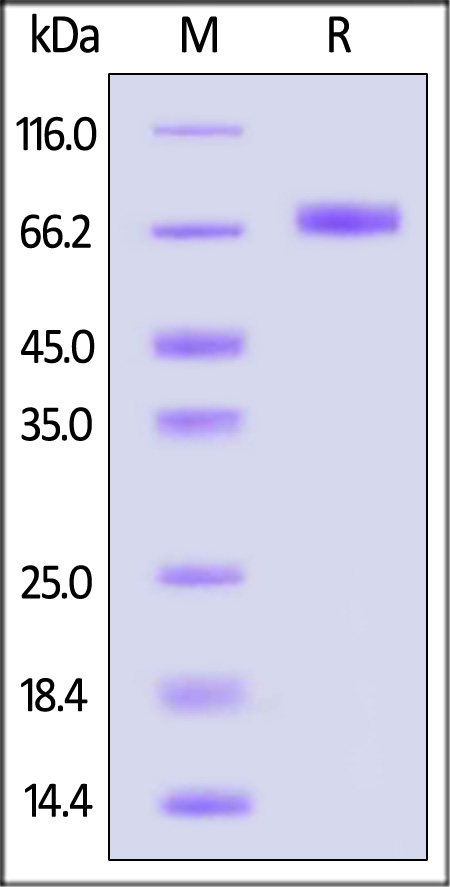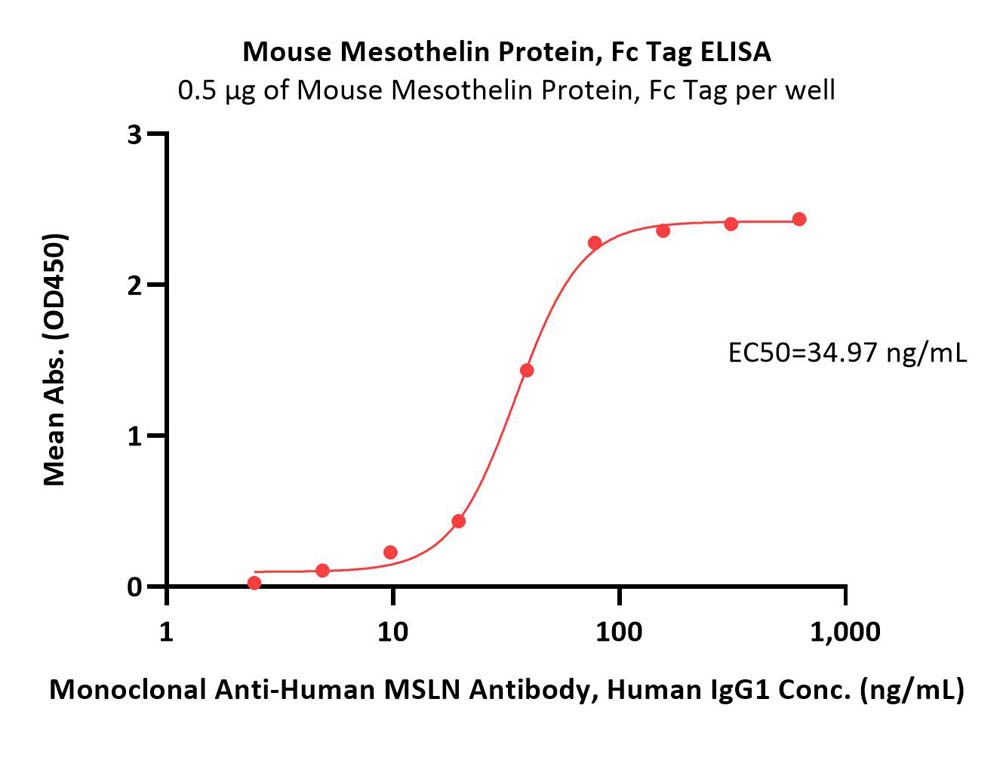Selective activation of interleukin-2/interleukin-15 receptor signaling in tumor microenvironment using paired bispecific antibodiesMontorfani, Hatterer, Chatel
et alJ Immunother Cancer (2025) 13 (3)
Abstract: Owing to their roles in promoting T cell and natural killer (NK) cell activation and proliferation, interleukins-2 (IL-2) and interleukins-15 (IL-15) have been pursued as promising pathways to target in cancer immunotherapy. Nonetheless, their wider therapeutic application has been hampered by severe dose-limiting toxicities including systemic cytokine release and organ edema for IL-2, and inconvenient intratumoral administration for IL-15. To address these safety issues, we generated IL-2R/IL-15R×TAA (tumor-associated antigen) bispecific antibody (bsAb) pairs to selectively activate IL-2R signaling in the tumor microenvironment.Each bsAb pair is composed of one bsAb targeting CD122 and a TAA epitope, and the other bsAb targeting CD132 and the same or a different TAA epitope. In vitro assays were performed to characterize the IL-2R/IL-15R agonistic activity of the bsAb pairs, as well as their capacity to enhance T-cell-mediated killing of TAA+ malignant cells. Using a syngeneic mouse tumor model, in vivo biological activity and systemic toxicity of the bsAb pairs were assessed in comparison with IL-2. The in vivo antitumor activity was assessed in combination with an anti-mouse programmed cell death protein 1 (mPD-1) monoclonal antibody.We demonstrated with two different TAAs (human epidermal growth factor receptor 2 (HER2) and mesothelin (MSLN)) that the CD122×TAA/CD132×TAA bsAb pairs mediate effective activation of immune cells exclusively in the presence of TAA+ tumor cells. In syngeneic hMSLN-MC38 tumor-bearing mice, the CD122×MSLN-1/CD132×MSLN-2 bsAb pair promotes selective activation and expansion of NK cells and central memory CD8+ T cells inside the tumor without inducing organ edema or systemic cytokine release, two well-known manifestations of IL-2 associated toxicity. In combination with checkpoint inhibitor anti-mPD-1, the bsAb pair boosts the accumulation of CD8+ effector T cells and NK cells, leading to a favorable CD8+ T cell to CD4+ regulatory T cell ratio for a more robust inhibition of tumor growth.Overall, the findings suggest that this innovative therapeutic approach effectively leverages the antitumor activity of IL-2 and IL-15 pathways while minimizing their associated systemic toxicities. This dual bsAb format holds potential for broader application in other immune-activating pathways.© Author(s) (or their employer(s)) 2025. Re-use permitted under CC BY-NC. No commercial re-use. See rights and permissions. Published by BMJ Group.
CD4+ anti-TGF-β CAR T cells and CD8+ conventional CAR T cells exhibit synergistic antitumor effectsZheng, Qin, Lv
et alCell Rep Med (2025) 6 (3), 102020
Abstract: Transforming growth factor (TGF)-β1 restricts the expansion, survival, and function of CD4+ T cells. Here, we demonstrate that CD4+ but not CD8+ anti-TGF-β CAR T cells (T28zT2 T cells) can suppress tumor growth partly through secreting Granzyme B and interferon (IFN)-γ. TGF-β1-treated CD4+ T28zT2 T cells persist well in peripheral blood and tumors, maintain their mitochondrial form and function, and do not cause in vivo toxicity. They also improve the expansion and persistence of untransduced CD8+ T cells in vivo. Tumor-infiltrating CD4+ T28zT2 T cells are enriched with TCF-1+IL7R+ memory-like T cells, express NKG2D, and downregulate T cell exhaustion markers, including PD-1 and LAG3. Importantly, a combination of CD4+ T28zT2 T cells and CD8+ anti-glypican-3 (GPC3) or anti-mesothelin (MSLN) CAR T cells exhibits augmented antitumor effects in xenografts. These findings suggest that rewiring TGF-β signaling with T28zT2 in CD4+ T cells is a promising strategy for eradicating solid tumors.Copyright © 2025 The Author(s). Published by Elsevier Inc. All rights reserved.
Potent and durable control of mesothelin-expressing tumors by a novel T cell-secreted bi-specific engagerKosti, Abram-Saliba, Pericou-Troquier
et alJ Immunother Cancer (2025) 13 (3)
Abstract: The glycosylphosphatidylinositol-anchored cell surface protein mesothelin (MSLN) shows elevated expression in many malignancies and is an established clinical-stage target for antibody-directed therapeutic strategies. Of these, the harnessing of autologous patient T cells via engineered anti-MSLN chimeric antigen receptors (CAR-T) is an approach garnering considerable interest. Although generally shown to target tumor MSLN safely, CAR-T trials have failed to deliver the impressive curative or response metrics achieved for hematological malignancies using the same technology. A need exists, therefore, for improved anti-MSLN molecules and/or more optimal ways to leverage immune effector cells.We performed ELISA, label-free kinetic binding assays, FACS, Western blotting, and transient recombinant MSLN expression to characterize the recognition properties of a novel CAR-active human scFv clone, LABC-13F08. To investigate T cell redirection, we conducted kinetic IncuCyte co-culture killing assays using transduced primary T cells and MSLN+ target cell lines and assessed levels of activation markers and effector cytokines. The antitumor potential of LABC-13F08 formatted as a bispecific engager (BiTE) was evaluated in vivo using transduced human primary T cells and immunocompromised NSG mice xenografted with ovarian, mesothelioma, and pancreatic MSLN+ tumor cell lines.The LABC-13F08 scFv is highly unusual and distinct from existing (pre)clinical anti-MSLN antibody fragments, exhibiting an absolute requirement for divalent cations to drive MSLN recognition. As a monovalent BiTE, LABC-13F08 demonstrates robust in vitro potency. Additionally, primary human T cells engineered for constitutive secretion of the 13F08 BiTE exhibit strong antitumor activity toward in vivo ovarian and mesothelioma xenograft models and show encouraging levels of monotherapy control in a challenging pancreatic model. LABC-13F08 BiTE secreted from engineered T cells (BiTE-T) can both recruit non-engineered bystander T cells and also induce activation-dependent MSLN-independent bystander killing of cells lacking cognate antigen. To address safety concerns, 13F08 BiTE-T cells can be rapidly targeted for clearance via a molecular "off" switch.The novel LABC-13F08 scFv exhibits a mode of binding to MSLN which is not observed in typical anti-MSLN antibodies. Efficacious targeting by a T cell secreted engager would represent a clinically differentiated approach for the treatment of MSLN+ tumors.© Author(s) (or their employer(s)) 2025. Re-use permitted under CC BY-NC. No commercial re-use. See rights and permissions. Published by BMJ Group.
Mesothelin (MSLN) is Highly Expressed in Triple Negative Breast Cancer and is Associated with Enhanced Cell Proliferation and Proinflammatory Tumor MicroenvironmentHagerty, Sato, Wu
et alAnn Surg Oncol (2025)
Abstract: Mesothelin (MSLN), a cell surface glycoprotein, is commonly expressed in several cancers, including 40% of triple negative breast cancer (TNBC) cases. Although its cellular or physiologic functions remain unclear, MSLN has been leveraged as a target for molecular therapies. This study investigates MSLN's potential role in TNBC, the breast cancer (BC) subtype with poorest outcomes.The breast cancer (BC) cohorts from the Molecular Taxonomy of Breast Cancer International Consortium (METABRIC, n = 313), The Cancer Genome Atlas (TCGA, n = 160), and SCAN-B (n = 155) were used to obtain biological variables and gene expression data.High MSLN expression was primarily observed in epithelial cells, and its expression was associated with reduced stromal adipocytes in the tumor microenvironment (TME), supporting its role as a TNBC surface marker. MSLN expression was also associated with the TNBC subtype and advanced N stages in BC. However, MSLN expression did not correlate with long-term survival outcomes, including overall survival (OS), disease-specific survival (DSS), or disease-free survival (DFS); nevertheless, it was still associated with favorable response to neoadjuvant chemotherapy (NAC). Indeed, MSLN-high tumors exhibited a proinflammatory microenvironment, higher cancer-testis antigen (CTA) scores, and increased immune cell activity, notably immature dendritic cells (iDCs) and M1 macrophages. Biologically, MSLN expression was linked to increased cellular proliferation, with gene set enrichment analysis (GSEA) showing enrichment in pathways related to rapid proliferation, such as G2M checkpoint and E2F targets.MSLN-high TNBC is characterized by increased tumor grade, enhanced cell proliferation, and a proinflammatory microenvironment, showing better response to neoadjuvant chemotherapy without significant impact on long-term survival outcomes.© 2025. Society of Surgical Oncology.



 +添加评论
+添加评论























































 膜杰作
膜杰作 Star Staining
Star Staining















